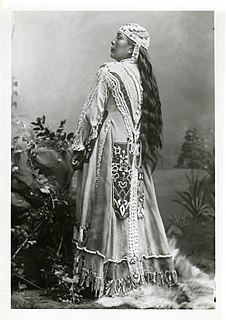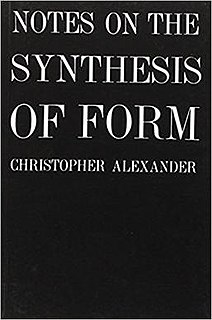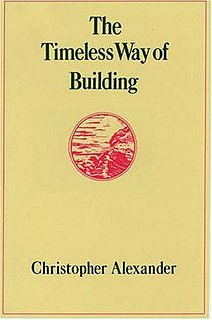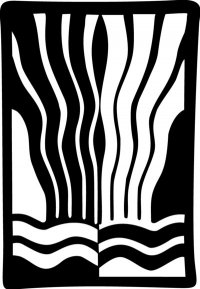
Christopher Wolfgang Alexander is a widely influential architect and design theorist, and currently emeritus professor at the University of California, Berkeley. His theories about the nature of human-centered design have affected fields beyond architecture, including urban design, software, sociology and others. Alexander has designed and personally built over 100 buildings, both as an architect and a general contractor.
A design pattern is the re-usable form of a solution to a design problem. The idea was introduced by the architect Christopher Alexander and has been adapted for various other disciplines, most notably computer science.

A pattern is a regularity in the world, man-made design, or abstract ideas. As such, the elements of a pattern repeat in a predictable manner. A geometric pattern is a kind of pattern formed of geometric shapes and typically repeated like a wallpaper design.
In software engineering, a software design pattern is a general, reusable solution to a commonly occurring problem within a given context in software design. It is not a finished design that can be transformed directly into source or machine code. It is a description or template for how to solve a problem that can be used in many different situations. Design patterns are formalized best practices that the programmer can use to solve common problems when designing an application or system.
Linguistic anthropology is the interdisciplinary study of how language influences social life. It is a branch of anthropology that originated from the endeavor to document endangered languages, and has grown over the past century to encompass most aspects of language structure and use.
A pattern language is a method of describing good design practices or patterns of useful organization within a field of expertise. The term was coined by architect Christopher Alexander and popularized by his 1977 book A Pattern Language.

The Takelma are a Native American people who originally lived in the Rogue Valley of interior southwestern Oregon.

Notes on the Synthesis of Form is a book by Christopher Alexander about the process of design.
Richard White is an American historian, a past President of the Organization of American Historians, and the author of influential books on the American West, Native American history, railroads, and environmental history. He is the Margaret Byrne Professor of American History at Stanford University, having previously taught at the University of Washington, University of Utah, and Michigan State University.
Nicholas Valentine Riasanovsky was a professor at the University of California, Berkeley and the author of numerous books on Russian history and European intellectual history.
Michael Silverstein is the Charles F. Grey Distinguished Service Professor of anthropology, linguistics, and psychology at the University of Chicago. He is a theoretician of semiotics and linguistic anthropology. Over the course of his career he has drawn together research on linguistic pragmatics, sociolinguistics, language ideology, semiotic anthropology and grammatical theory into a comprehensive account of language in culture. Among other achievements, he has been instrumental in introducing the semiotic terminology of Charles Sanders Peirce, including especially the notion of indexicality, into the linguistic and anthropological literature; with coining the terms metapragmatics and metasemantics in drawing attention to the central importance of metasemiotic phenomena for any understanding of language or social life; and with developing language ideology as a field of study. His works are noted for their terminological complexity and technical difficulty.
Latgawa are Native American people who lived in the Rogue Valley of interior southwest Oregon. In their own language "Latgawa" means "those living in the uplands," though they were also known as the Walumskni by the neighboring Klamath tribe.
PALLAS stands for Parallel Applications, Libraries, Languages, Algorithms, and Systems. It is a research group in The Parallel Computing Laboratory of the Electrical Engineering and Computer Science Department at University of California, Berkeley, led by Professor Kurt Keutzer. The group believes that the productive development of applications for an emerging generation of highly parallel microprocessors is the preeminent programming challenge of our time. Its goal is to enable the productive development of efficient parallel applications by domain experts, not just parallel programming experts.
Linda Rising is an American author, lecturer, independent consultant and chief operating officer (COO) of The Hillside Group. Rising is credited as having played a major role in having "moved the pattern approach from design into corporate change." She also contributed to the book 97 Things Every Software Architect Should Know, edited by Kevlin Henney and published by O´Reilly in 2009 (ISBN 059652269X).

The Timeless Way of Building is a 1979 book by Christopher Alexander that proposes a new theory of architecture that relies on the understanding and configuration of design patterns. Although it came out later, it is essentially the introduction to A Pattern Language and The Oregon Experiment, providing the philosophical background to the Center for Environmental Structure series.
Michael West Mehaffy is an urbanist, architectural theorist, urban philosopher, researcher, educator, and executive director of Sustasis Foundation, based in Portland, Oregon, USA. He is also Senior Research Associate at KTH Royal Institute of Technology, and Director of the Future of Places Research Network in Stockholm, Sweden. He is the former Director of Education of The Prince's Foundation for Building Community in London, UK.
Sara Ishikawa is an architect and academic specializing in people-space relationships. She is a professor emerita at the College of Environmental Design, University of California, Berkeley. She is co-author of A Pattern Language, The Oregon Experiment and Houses Generated By Patterns.






